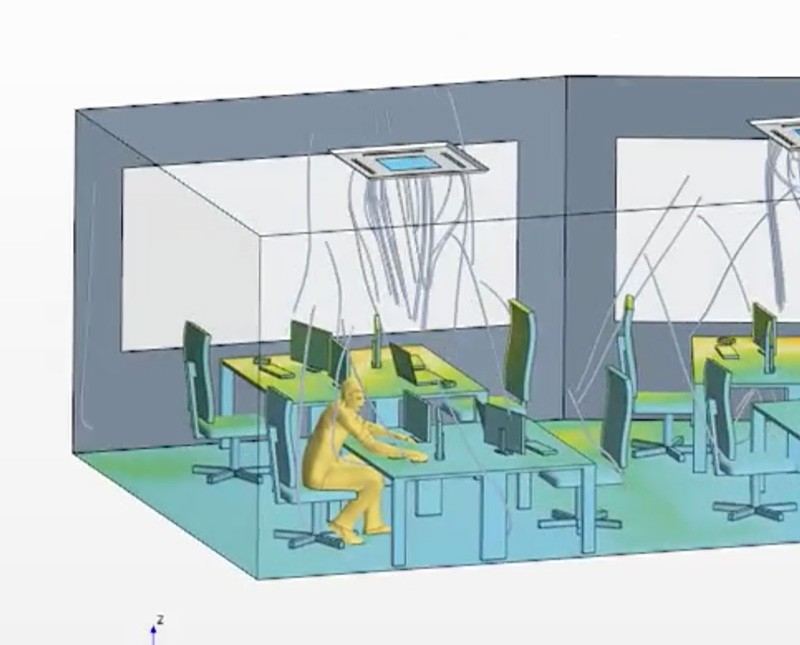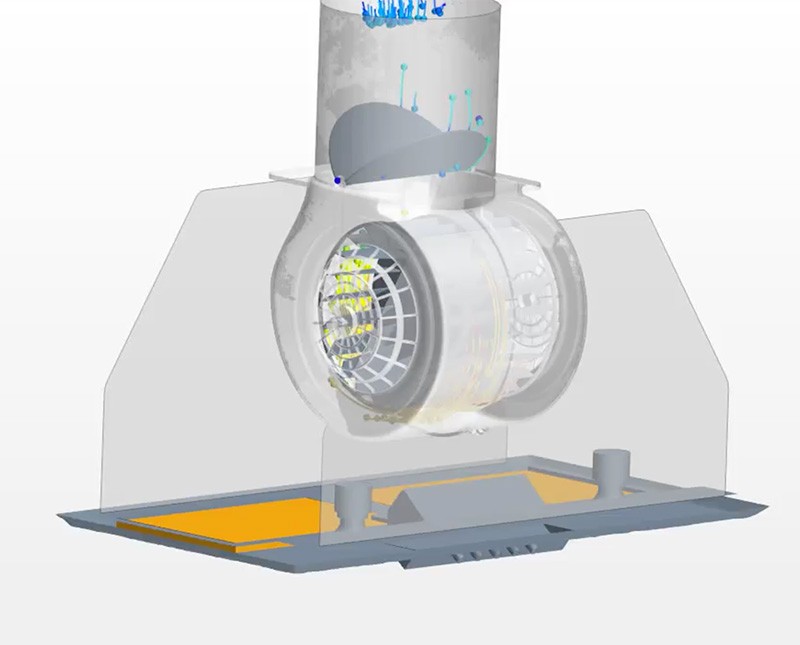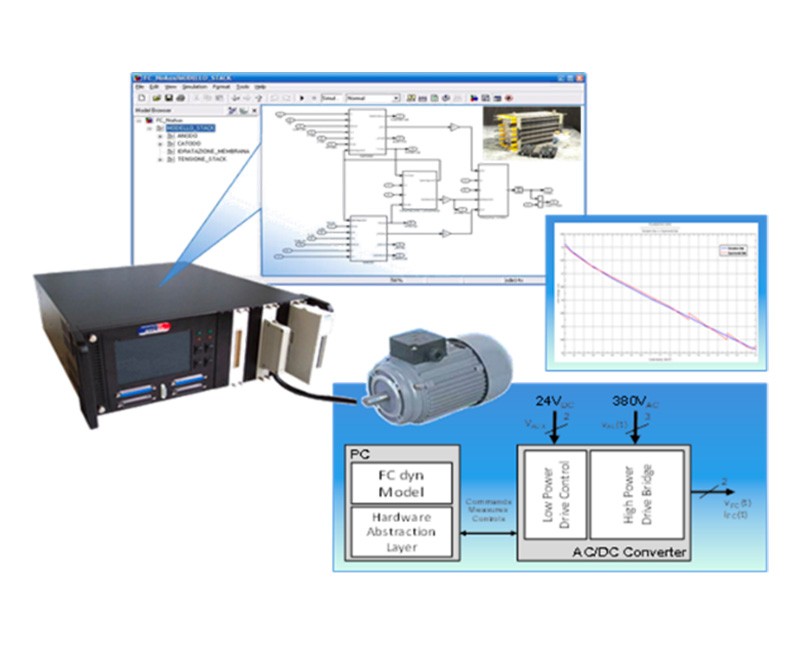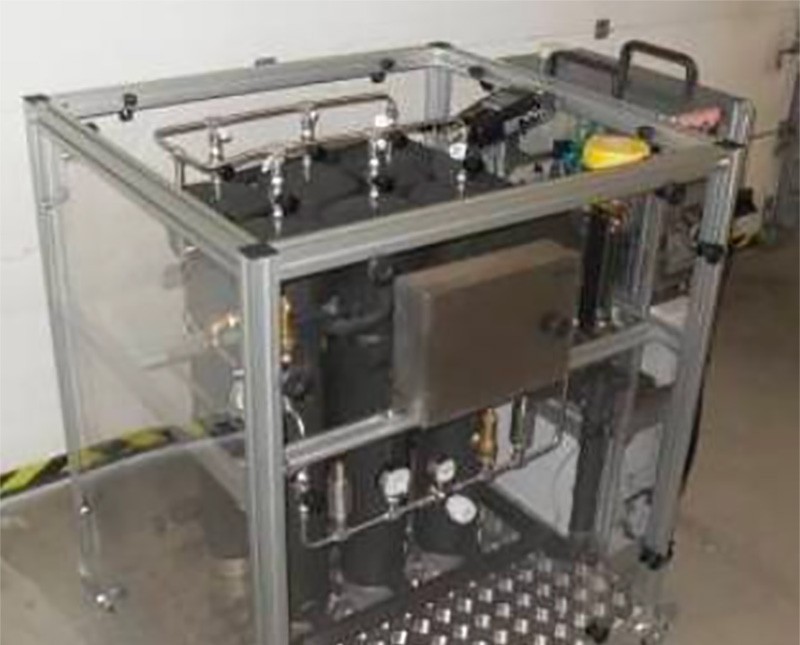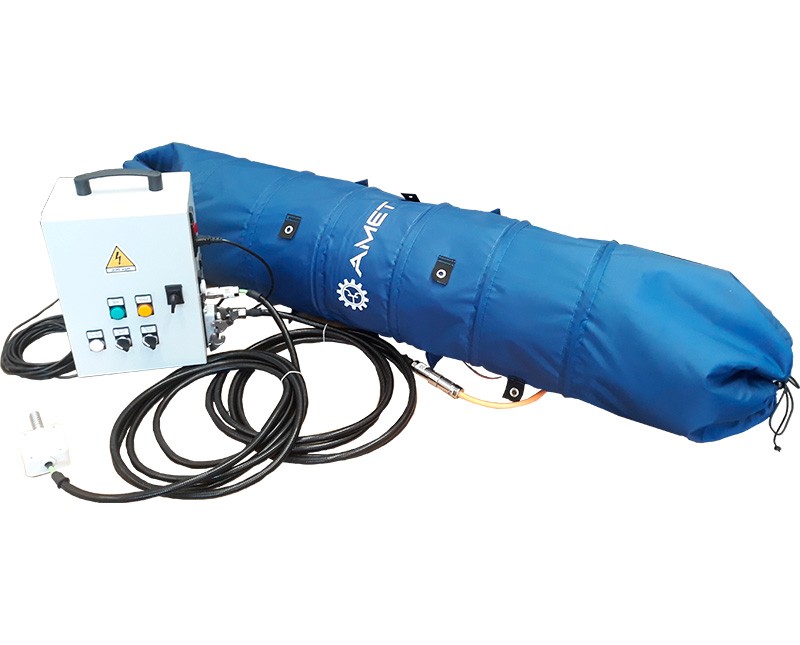Main target
Virtual fluid dynamics analysis is a very useful tool in the design phase of air conditioning systems because it allows for simulation and optimization of the air flows that are created inside the rooms of a building.
Description
- Creation of the CFD (Computational Fluid Dynamics) model of the environments to be analyzed starting from the plans provided by the architecture office
- Numerical simulations virtually reproducing the different scenarios that may arise when the positioning of the air conditioning system terminals and the number of people present in the rooms vary
- Application of thermal loads, internal and external to the environments under study; a typical external load is solar thermal through the glass surfaces
- Correlation of the calculation models with the real ones using the experimental measurements carried out on site
Benefits
The advantages that fluid dynamics analysis allows to obtain are many:
- analyze different air conditioning system solutions in the rooms in order to ensure the conditions of well-being and reduce energy consumption to obtain a high energy class;
- the possibility of calculating the quantities that determine environmental well-being such as temperature, pressure and air speed, concentration of contaminants; useful quantities for sustainability certifications;
- the opportunity to examine different design and stylistic solutions and thus optimize the positioning of the air conditioning system terminals, in particular in the design of environments with large volumes such as auditoriums, theaters, sports halls, warehouses, railway stations, etc.


